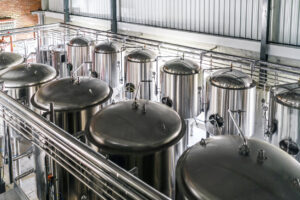A new report is forecasting that the office vacancy rate in Kanata will dip into the single digits for the first time since the financial crisis of 2008.
Commercial real estate services firm CBRE released its 2018 outlook for key markets across the country this week.
It painted a largely positive picture for the nation’s capital, which the brokerage firm said is experiencing a significant increase in “city-building projects” such as the light-rail line, new Civic Hospital and large-scale condominium projects.
OBJ360 (Sponsored)

Sidi.io draws VIP crowd at cheers and chats
You don’t always need to hit a business milestone to throw a really good party. That was the case on May 2, when digital marketing firm Sidi.io gathered its clients

Your Ottawa River adventure starts at Château Montebello
Look no further for a bit of rest and relaxation this summer than Château Montebello, the log cabin resort that offers rustic luxury.
In the downtown core – where the office vacancy rate is forecast to decline from 9.5 per cent last year to 9.2 per cent in 2018 – CBRE says Shopify and the rise of “urban tech” are changing the conversation around Ottawa’s commercial real estate market from one that was solely centred on the federal government to that of an emerging Canadian tech hub.
“As more tech companies mobilize into the downtown core, this leading-edge tenant has the potential to change the landscape of downtown Ottawa in 2018 and beyond,” CBRE states.
The shift comes at a time when the city’s traditional tech focal point – Kanata – is also on the upswing.
CBRE says the deep west submarket is seeing sustained interest from tenants that are both new to the market as well as companies already in Kanata looking to expand. This led the brokerage firm to predict that vacancy rates will fall into the single digits this year for the first time in a decade.
Citywide average class-A net asking rents are poised to take a large jump this year, according to CBRE, from $18.12 per square foot to $19.57.
Meanwhile, industrial space users are expected to face even greater competition for well-located, high-quality properties as the availability rate drops from 4.6 per cent in 2017 to 4.4 per cent this year. That would be the lowest level since 2006, according to CBRE.

While Ottawa’s industrial market has long been characterized by stable demand and limited supply, new pressure is coming from new types of businesses such as microbreweries, gymnastics centres and marijuana growers looking for industrial space.
National perspective
Nationally, the CBRE report said the Canadian commercial real estate market set another record for investments in 2017 and was one of only four countries in the world to do so.
The report said there were more than $43.1 billion in investments last year, surpassing the total of $34.7 billion in 2016, and CBRE predicts another record will be established in 2018.
CBRE said strong tenant demand, coupled with declining vacancy rates which are at, or near, all-time lows in many Canadian markets, will lead to strong increases in rental rates.
“Investors are not shying away from Canadian commercial real estate,” said CBRE Canada executive managing director Paul Morassutti.
“We have record low vacancy rates, record low unemployment, increasing institutional allocation to real estate and supportive immigration that fuels population growth.”
CBRE said, however, that the commercial real estate market does face some risk in 2018, including rising interest rates and the fate of the North American Free Trade Agreement, but it believes the underlying strength in the market will outweigh these concerns.
The company says Toronto and Vancouver began 2018 with the lowest downtown office vacancies in North America at 3.7 per cent and five per cent respectively and predicts those rates will fall even lower this year due to growing tenant demand and a lack of new office supply.
CBRE says growth in tenant demand is spreading to other cities, with downtown office vacancy rates also slated to fall in London, Ont., the Waterloo Region, Ottawa, Montreal and Halifax.
After surging for the past two years, CBRE predicts vacancy rates will finally stabilize in Calgary as the recovery in Alberta starts to take hold.
“In 2018, Canada will once again find itself at the centre of two very powerful investment trends,” said Morassutti.
“Firstly, our status as a safe haven with stable rule of law gets more pronounced as geopolitical instability continues to accelerate. Secondly, real estate has arrived as a true ‘fourth asset class’ that provides yield in a yield-starved world. As a result, institutional allocations are set to increase by over 20 per cent in the next five years.”
– With reporting by the Canadian Press





